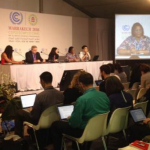India, a nation with a population of over 1.3 billion, faces complex challenges across various sectors. To address these, the government has devised and implemented several national missions, ambitious programs aimed at achieving specific goals in crucial areas. These missions serve as catalysts for progress, impacting millions of lives across the country. As we stand in February 2024, let’s take a stock of some key national missions and their current status:
Understanding the Landscape:
Launched in various years, these missions vary in their progress and impact. Some have achieved remarkable success, while others face persistent challenges. To gauge their effectiveness, it’s crucial to examine them within their specific contexts and timelines. This blog provides an update on some key National Missions in India, highlighting their achievements, ongoing efforts, and future directions.
-
Climate Change:
National Action Plan on Climate Change (NAPCC): Launched in 2008, this plan encompasses eight missions targeting renewable energy, energy efficiency, sustainable habitat, water conservation, Himalayan ecosystem protection, afforestation, sustainable agriculture, and climate change knowledge.
Progress: India has made significant strides in solar power generation, exceeding NAPCC targets. Energy efficiency initiatives are ongoing, and afforestation efforts have shown progress. However, challenges remain in water conservation and Himalayan ecosystem protection.
-
Health:
Ayushman Bharat: This flagship mission aims to provide comprehensive health insurance coverage to over 500 million Indians.
Progress: Ayushman Bharat has enrolled millions into its insurance scheme, providing access to secondary and tertiary healthcare services. However, concerns remain regarding accessibility in rural areas and claim settlement processes.
Mission Indradhanush: This mission focuses on immunizing children against seven vaccine-preventable diseases.
Progress: Mission Indradhanush has significantly improved immunization coverage, contributing to a decline in vaccine-preventable diseases. However, achieving full immunization remains a challenge in some regions.
-
Education and Skill Development:
Skill India: This mission aims to train and skill 400 million Indians by 2022.
Progress: Skill India has trained millions of individuals, but concerns exist regarding skill quality and employability of graduates. Alignment with industry needs remains crucial.
Atal Innovation Mission (AIM): This mission fosters innovation and entrepreneurship among school students.
Progress: AIM has established Tinkering Labs in schools and organized innovation challenges, sparking creativity and problem-solving skills in young minds. However, ensuring sustainability and scaling up the program remain key challenges.
-
Urban Development:
Smart Cities Mission: This mission aims to develop 100 cities into smart and sustainable urban spaces.
Progress: Smart City projects are underway in various cities, with a focus on technology-driven solutions for transportation, waste management, and citizen services. However, concerns remain regarding implementation pace, financial sustainability, and inclusivity.
Swachh Bharat Abhiyan: This mission aims to achieve open defecation-free (ODF) status for all and improve sanitation across the country.
Progress: Swachh Bharat Abhiyan has significantly increased toilet coverage and sanitation awareness. However, sustaining hygiene behavior and managing solid waste effectively remain challenges.
-
Digital Transformation:
Digital India: This mission aims to transform India into a digitally empowered society and knowledge economy.
Progress: Digital India has made significant strides in providing digital infrastructure, promoting digital literacy, and delivering e-governance services. However, bridging the digital divide, ensuring data security, and promoting responsible online behavior remain crucial.
Also read: Empowering India Aspirational Districts
Challenges & Opportunities:
Despite their gains, the missions face hurdles:
Funding constraints: Limited resources sometimes impede the full implementation of mission objectives.
Bureaucratic bottlenecks: Streamlining administrative processes is crucial for faster execution.
Capacity building: Strengthening local governance and community engagement is essential for long-term sustainability.
Moving Forward:
To maximize impact, continuous improvements are needed:
Data-driven decision making: Real-time data analysis can guide resource allocation and track progress effectively.
Public-private partnerships: Collaborations with private entities can bring in additional expertise and resources.
Community participation: Empowering local communities ensures projects address their specific needs and are sustained.
Also read: India Programme for Diaspora Youth
Final Thoughts
As India strives to become a developed nation, national missions serve as crucial tools for progress. Evaluating their progress regularly, addressing challenges, and adapting to evolving needs are essential for their success. Moving forward, key areas like promoting public-private partnerships, ensuring transparency and accountability, and leveraging data and technology effectively will be vital for achieving the ambitious goals set by these national missions.











